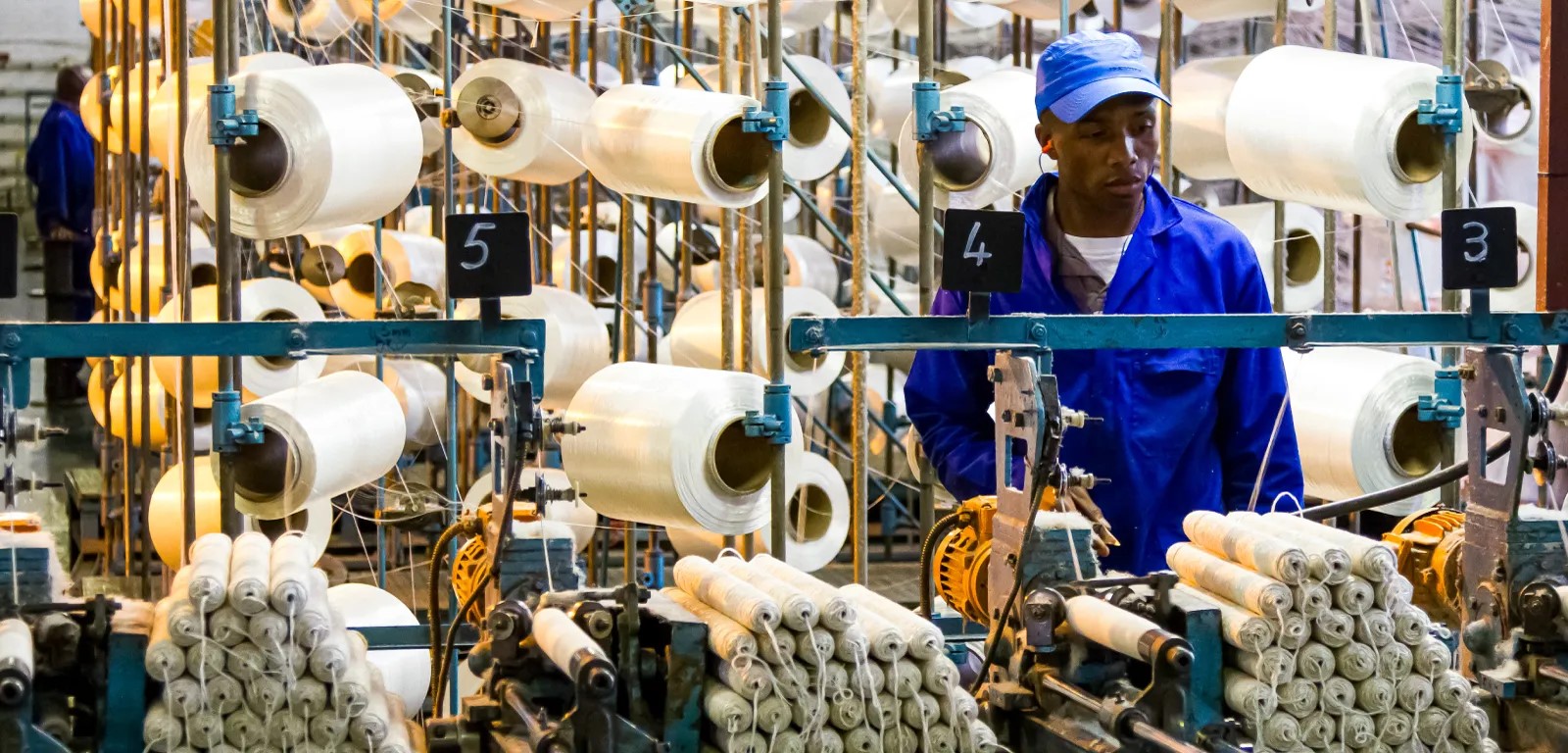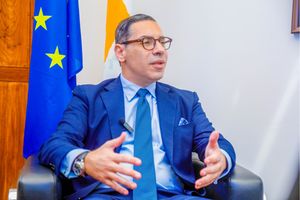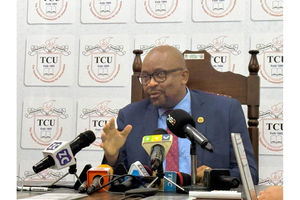FEATURE: Who are the anti-balaka in scarred CAR?

Anti Balaka fighters at Bangui’s estate PK9, waiting to attack Muslim IDPs convoys passing along the road. PHOTO | NMG
What you need to know:
- “Balaka” is the Sango word for machete. Some sources say it also alludes to the French for bullets of an automatic rifle (“balle AK”). Either way, “anti-balaka” roughly means “invincible”
Who are the anti-balaka?
In Soriano’s words: “We don’t know”.
Their leaders’ identity, their chain of command and their political programme are all unknowns, he told a meeting of community representatives in Bangui. At the same meeting, his African Union counterpart, Cameroonian Gen Martin Tumenta (commanding MISCA, the AU mission in CAR), expressed frustration that Bangui’s citizens have not been providing the force with more information about the anti-balaka.
An audience member’s claim that calls to a MISCA hotline number tend to go unanswered prompted an angry response from Tumenta. “So you’re calling us useless?” he said before walking out of the meeting.
“Balaka” is the Sango word for machete. Some sources say it also alludes to the French for bullets of an automatic rifle (“balle AK”). Either way, “anti-balaka” roughly means “invincible”, a power purportedly bestowed by the charms that hang around the necks of most members. The term gained currency five or six years ago, when it was applied to self-defence units set up - in the absence of effective state security forces - to protect communities from attacks by highway bandits or cattle raiders.
Several rebel groups joined forces under the banner of the Seleka (“alliance” in Sango) forces in late 2012, and seized power the following March. “Anti-balaka” caught on as a generic term for those resisting the brutal Seleka (a word to which, since the alliance’s official disbanding in September 2013, the prefix “ex” has usually added).
Clashes in December 2013 between anti-balaka and the ex-Seleka led to reprisal attacks in which about 1,000 people died in Bangui. The anti-balaka have been largely responsible for driving the ex-Seleka from many of their bases in western CAR.
What is the religious connection?
Most Seleka members were Muslim, chiefly because Islam is the more prevalent religion in the marginalized northern areas where rebel groups sprang up. Seleka members committed widespread atrocities after seizing power in March 2013, including killings, large-scale arson and rape.
More recently Muslims, many with no connection to the rebels, have been targeted in reprisals by anti-balaka and civilians. According to Amnesty International, such attacks have led tens of thousands to leave CAR in “an exodus of historic proportions”.
According to Human Rights Watch (HRW), “the anti-balaka militias are increasingly organized and using language that suggests their intent is to eliminate Muslim residents from the Central African Republic.”
“At this rate, if the targeted violence continues, there will be no Muslims left in much of the Central African Republic,” Peter Bouckaert, emergencies director at Human Rights Watch, said in an emailed statement.
“People whose families have peacefully lived in the country for centuries are being forced to leave, or are fleeing the very real threat of violence against them.”
A self-styled spokesman for the anti-balaka, Sebastien Wenezoui, has said that the movement is fighting to defend Christians. Most of its recruits are from Christian or animist communities. But Christian and Muslim leaders have insisted that the neither anti-balaka nor ex-Seleka can credibly claim to represent either faith.
What are the anti-balaka’s links with the army?
After the coup, many members of the former government army, known by its French acronym, FACA, joined the anti-balaka. In the prefecture of Lobaye, all anti-balaka commanders there came from FACA, residents told IRIN.
People whose families have peacefully lived in the country for centuries are being forced to leave, or are fleeing the very real threat of violence against them
On 14 January, a few days after post-coup president Michel Djotodia stepped down, hundreds of men, many of whom had fought as anti-balaka, showed up for duty at FACA headquarters. Hundreds more have since appeared at morning assemblies. How many of them were bona fide soldiers before the coup, and how many still consider themselves members of anti-balaka, is not clear.
Anti-balaka spokesmen have called for members to be integrated into the army “with appropriate rank” or given demobilization packages.
Earlier this month, minutes after newly installed interim president, Catherine Samba-Panza, addressed an inaugural parade of re-launched FACA, a dozen of them set on a suspected ex-Seleka in their midst and kicked him to death, in full view of international media. No arrests have been made.
In Lobaye, the anti-balaka - many wearing military uniforms but without FACA insignia - man roadblocks beside gendarmes. Amnesty International reports that the anti-balaka occupy FACA barracks in parts of the country. Asked what they think about the anti-balaka, a group of FACA soldier told IRIN: “They are our brothers. We are together against the Seleka.”
What is the structure of anti-balaka?
They are said to consist of many groups, including at least 10 in Bangui, based on the city’s arrondissements, and many others across the country. There have been no reports of anti-balaka groups fighting each other.
Two ministers in the government of ousted president Francois Bozize, Patrice Edouard Ngaissona and Joachin Kokate, claim to be the anti-balaka’s national-level political and military coordinators, respectively. Bozize has denied having a controlling hand over the group.
Ngaissona returned to Bangui from exile in December 2013 and has since upstaged Kokate in the media. Both he and Ngaissona have told media that the “token” anti-balaka representative in the new government, Leopold Narcisse Mbara, minister for youth and sport, was not the movement’s choice.
Following the condemnation of anti-balaka by Soriano, Ngaissona said the movement is committed “to pacification and normalization in CAR”.



